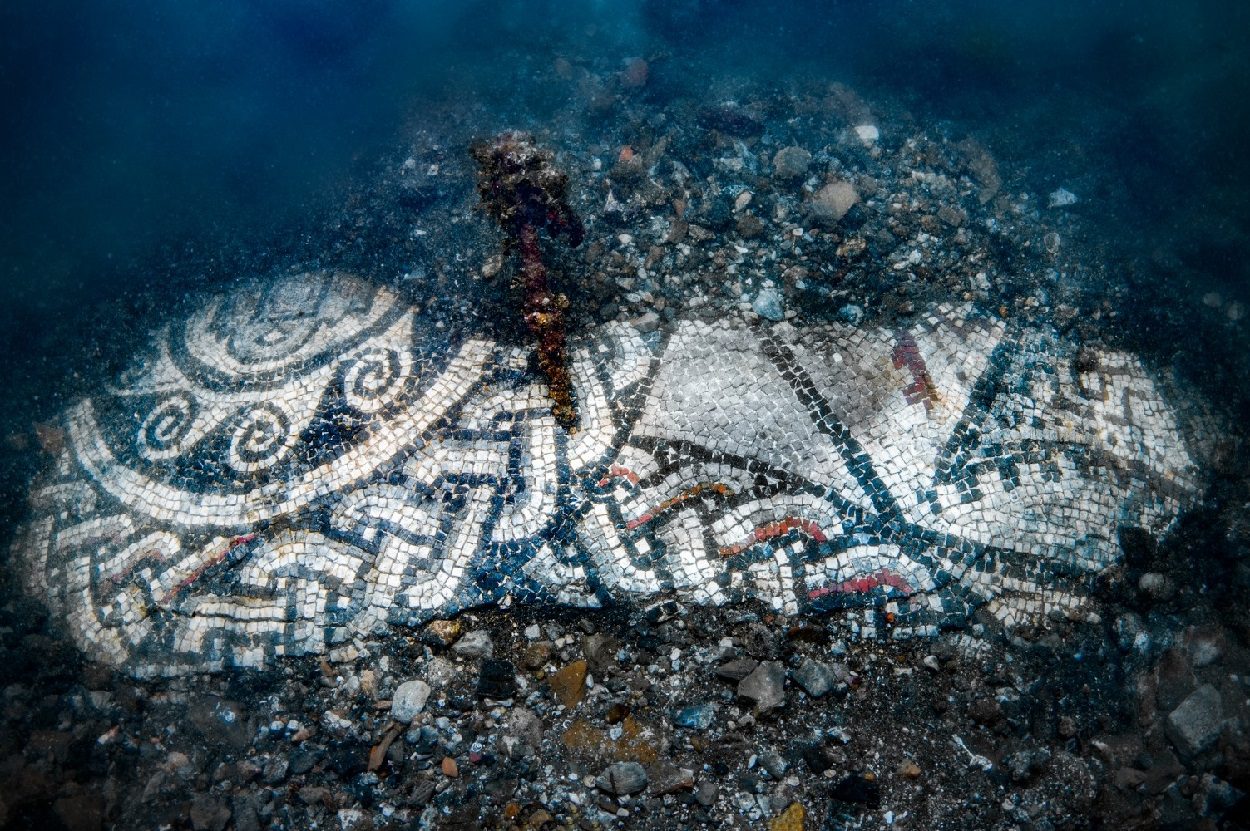A TEAM OF UNDERWATER ARCHAEOLOGISTS HAVE DISCOVERED A MOSAIC IN THE SUBMERGED RUINS OF ROMAN BAIE.
Baiae is a partially submerged Roman town on the shore of the Gulf of Naples in the present-day comune of Bacoli, Italy. The town grew into a popular resort, gaining a reputation for a hedonistic lifestyle, which according to the Roman poet, Sextus Propertius, was a “vortex of luxury” and a “harbour of vice”.
Many notable figures from Roman history visited frequently, including Gnaeus Pompeius Magnus (also known as Pompey the Great), Julius Caesar, Gaius Marius, Lucius Licinius Lucullus, Hadrian, and Septimius Severus.
The most significant remains of the town consist of various high-status luxury villas, several dome-like temple structures, and the Parco Archeologico delle Terme di Baia. Some of the temples include the Temple of Diana, the temple of Mercury, and the Temple of Venus – which has since sunk 3 metres beneath ground level.
 Image Credit : Edoardo Ruspantini
Image Credit : Edoardo Ruspantini
Due to the position of the town on the Cumaean Peninsula in the Phlegraean Fields, an active and volatile volcanic region, local volcanic bradyseismic activity raised and lowered the geology on the peninsula that resulted in the lower parts of the town being submerged.
Underwater archaeologists from the Campi Flegrei Archaeological Park have been conducting a survey of the Terme del Lacus area, revealing an ornate mosaic containing white, blue and red tesserae, dating from around 2,000-years-ago.
The mosaic was found in situ in the remains of a Roman structure and consists of psychedelic intertwining geometric lines, crossing braids, and hexagons with concave sides. Archaeologists suggest that the mosaic is similar to designs found in Tunisia, where Carthage, the ancient rival of Rome was conquered in 146 BC during the Third Punic War.
The survey also recently found the remains of a block of structures covering 60 metres in length, stone colonnades, marble columns, and a large piece of marble opus sectile flooring with portasanta and white marble in a chromatic alternating pattern.
Parco Archeologico Campi Flegrei
Header Image Credit : Edoardo Ruspantini








